#grand duke michael mikhailovich
Text
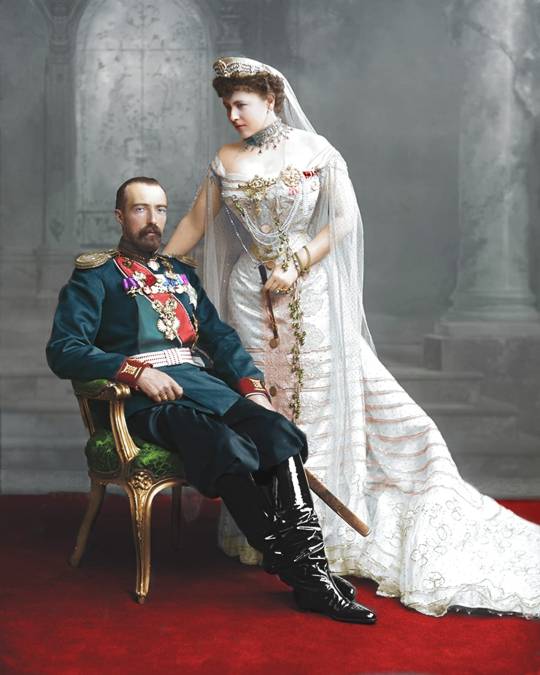

Grand Duke Michael Mikhailovich and his wife Sophie de Torby for the coronation of Edward VII, August 1902
#colorization#royalty#photo colorization#colour#imperial russia#image colorization#colored images#colourisation#grand duke michael mikhailovich#countess sophie#coronation#1900s#edwardian#explore#tumblr
31 notes
·
View notes
Text

Grand Duke Michael Mikhailovich and his bride, Countess Sophie of Merenberg, Cannes, 1891.
28 notes
·
View notes
Text

The imperial family on the skating rink in the garden of the Anichkov Palace 1890.
Tsar Alexander III, Tsesarevich Nicholas Alexandrovich, Grand Duchess Xenia Alexandrovna, Grand Dukes George Alexandrovich, Mikhail Alexandrovich, Alexander Mikhailovich and Sergei Mikhailovich.
#alexander iii#tsesarevich nicholas#george alexandrovich#xeina alexandrovna#mikhail alexandrovich#Alexander mikhailovich#sergei mikhailovich#1890s#st petersburg#anichkov palace#romanovs#russian empire#michael alexandrovich#tsar alexander iii#tsar nicholas ii#grand duke george#grand duke michael
101 notes
·
View notes
Text

Cousin Trouble
I like this picture because it may corroborate something I read sometime ago…about the relationship between Princess Marie of Greece and Denmark, future Grand Duchess Maria Georgevna and her husband. This is the one photo where I have seen them together, that they are the youngest. We see Greek Minnie - (Princess Marie of Greece and Denmark) sitting to the left of Grand Duchess Olga Alexandrovna. Minnie looks very young, not out of her teens yet. Directly behind Olga stands a young and handsome Grand Duke Georgyi Mikhailovich. We know that Marie and George would marry years later and that George had to ask Minnie several times for her hand in marriage and she kept on vacillating and made it clear she never loved him before saying yes. By then, Minnie was in love with a commoner in her father’s court whom she could not marry. Minnie and George did not have a good marriage although they loved their two daughters. The daughters, rightly or wrongly, blamed Marie for the chasm that would widen between their mother and father.
The point I was trying to make is that, there seem to have been reasons in addition to “the commoner” for Minnie’s loud refusal to not marry George (Alexander III had to intervene.) Princess Marie, being Grand Duchess Xenia’s best friend (Xenia does not appear in the photo) visited Russia from a young age. Xenia had been in love with George’s brother Sandro since she was 12 or 14…and it seems that young Greek Minnie fell in love with Sandro’s brother Georgyi…wouldn’t it had been exciting…a double wedding? Well, Georgyi was not ready for that back then…he was sowing his wild oats, as they say. And he rebuffed Minnie. I bet she never forgot that…so that is another factor contributing to the issues in their marriage. Also, at the time he was pursuing Princess Nina Chavchavadze, whom he was not allowed to marry (this was his true love.)
I hope you don’t have a headache after reading this and managed to get something out of my ramblings.
#russian history#imperial russia#vintage photography#Grand Duchess Maria Georgievna#Grand Duke George Mikhailovich#Grand Duchess Olga Alexandrovna#Grand Duke Michael Alexandrovich#Princess Victoria of Wales#Olga Queen of the Hellenes
16 notes
·
View notes
Text

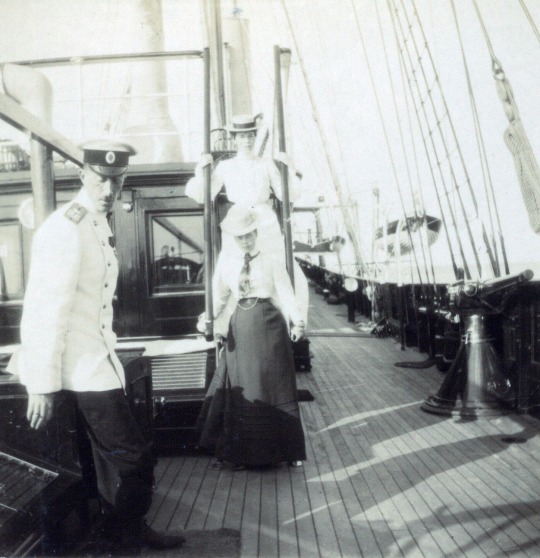

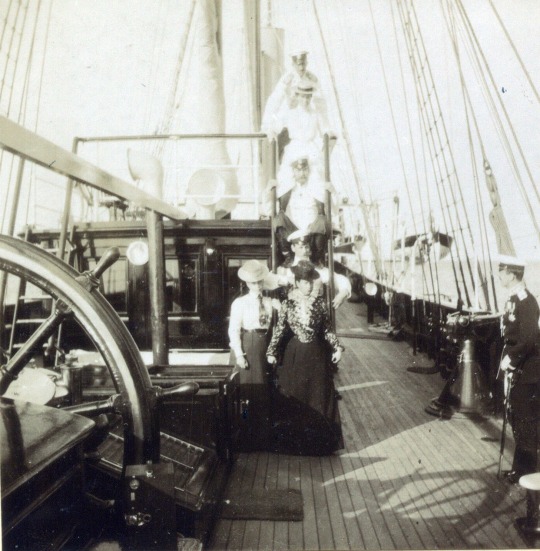

Grand Duchess Olga Alexandrovna, Grand Duchess Xenia Alexandrovna, Grand Duke Michael Alexandrovich, Peter of Oldenburg, Grand Duke Alexander Mikhailovich, Tsar Nicholas II and Maria Feodorovna taking photos at the imperial yacht.
(source: 📷)
#olga alexandrovna#tsar nicholas ii#xenia alexandrovna#peter of oldenburg#grand duke alexander mikhailovich#maria feodorovna#grand duchess#tsar#grand duke michael#grand duke#tsarina#my own
21 notes
·
View notes
Text

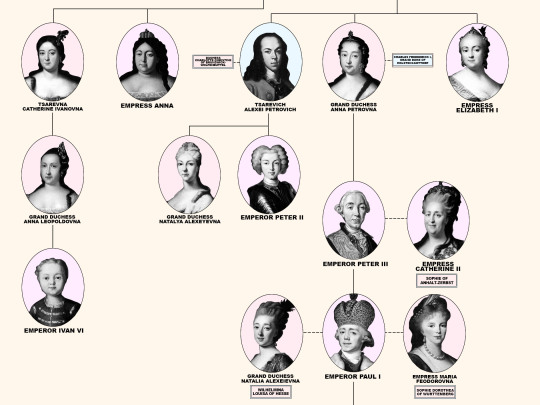
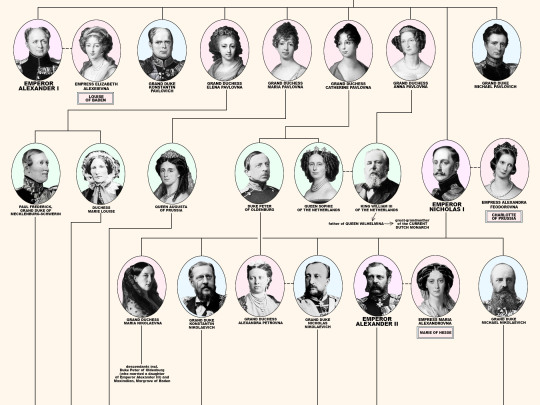
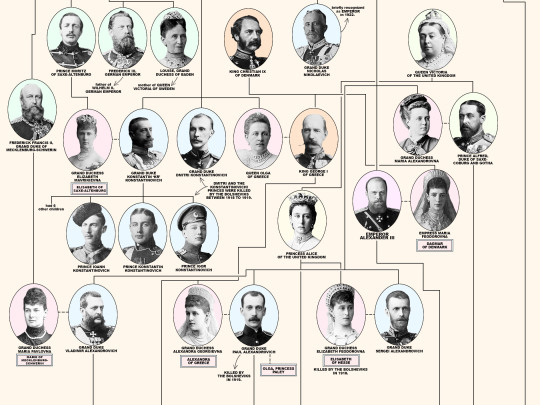

Members of the House of Romanov, the last reigning Dynasty of Russia.
From the first Romanov Russian Tsar Michael I (reigned 1613-1645) until the last Emperor Nicholas II (reigned 1894-1917). Including the 18 members of the house executed from 1918 until 1919; Grand Duke Michael Alexandrovich (13 June 1918). Nicholas II, Empress Alexandra Feodorovna, Grand Duchesses Olga Nikolaevna, Tatiana Nikolaevna, Maria Nikolaevna, Anastasia Nikolaevna, and Tsarevich Alexei Nikolaevich (17 July 1918). Grand Duchess Elizabeth Feodorovna, Grand Duke Sergei Mikhailovich, Prince Ioann Konstantinovich, Prince Konstantin Konstantinovich, Prince Igor Konstantinovich, and Prince Vladimir Paley (18 July 1918). Grand Duke Paul Alexandrovich, Grand Duke Dmitri Konstantinovich, Grand Duke Nicholas Mikhailovich, and Grand Duke George Mikhailovich (28 January 1919).
#romanovs#history#nicholas ii#alexandra feodorovna#olga nikolaevna#tatiana nikolaevna#maria nikolaevna#anastasia nikolaevna#alexei nikolaevich#myedits#peter i#peter ii#Peter iii#peter iii#Catherine the great#tsar alexei i#tsar michael#tsar paul i#alexander i#alexander ii#alexander iii#nicholas i#ancestry
273 notes
·
View notes
Text
Devonshire House Ball, 1897
The Devonshire House Ball or the Devonshire House Fancy Dress Ball was an elaborate fancy dress ball, hosted by the Duke and Duchess of Devonshire, held on 2 July 1897 at Devonshire House in Piccadilly to celebrate the Diamond Jubilee of Queen Victoria.


The Prince and the Princess of Wales (Edward VII and Alexandra)


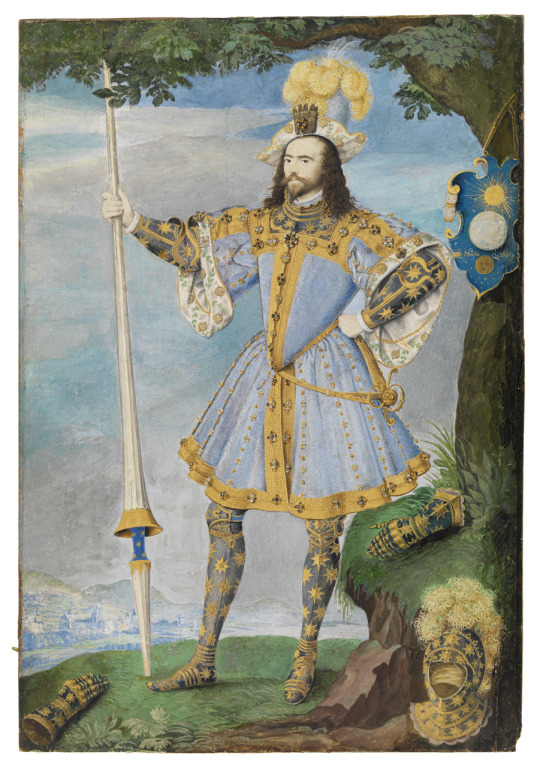
The Duke and the Duchess of York (George V and Mary)

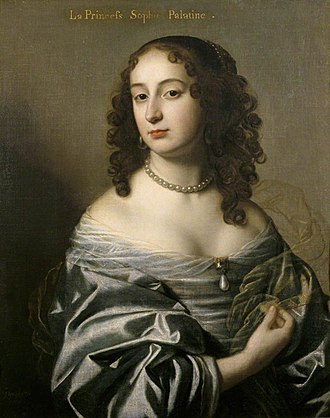
Princess Mary Adelaide (the mother of Mary)
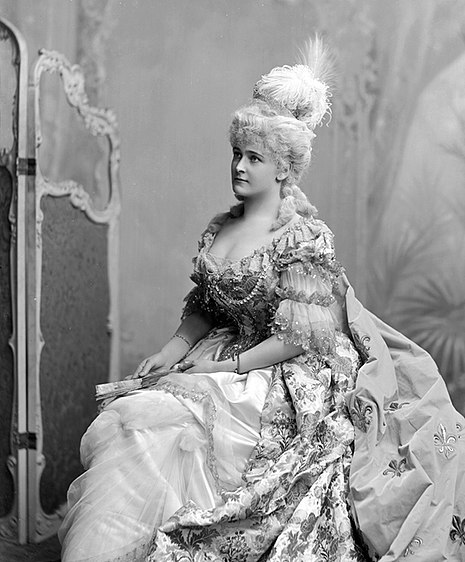

The Countess of Warwick dressed as Marie Antoinette
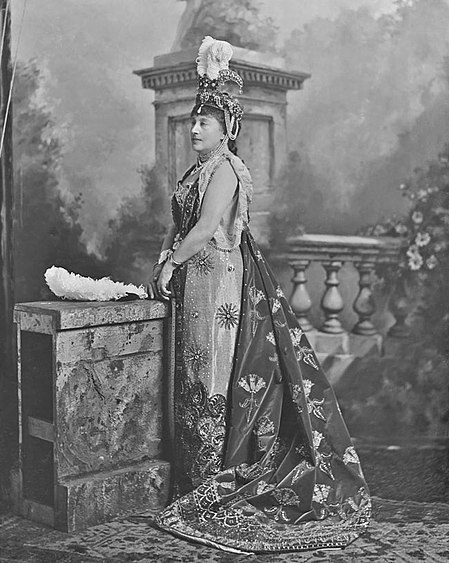

The Duchess of Devonshire



Grand Duke Michael Mikhailovich of Russia and his wife
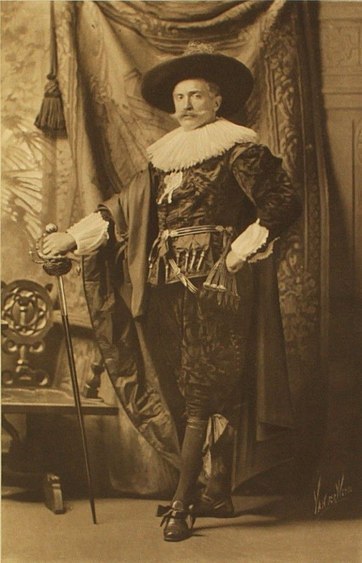

The Viscount D'Abernon


Daisy, Princess of Pless dressed as Cleopatra

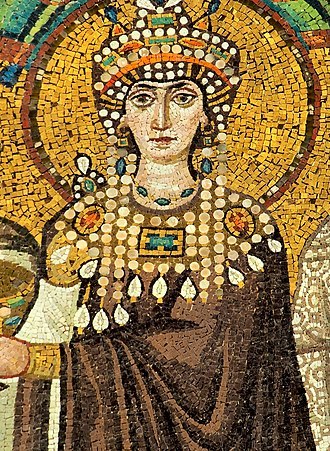
Lady Randolph Spencer-Churchill in a byzantine dress
P.S (For every person I put at first their photo and then the inspo for their costume)
#united kingdom#uk monarchy#queen mary of teck#british royal family#king george v#england#cleopatra#byzantine#queen alexandra#edward vii#royals#royal style#brf#queen victoria#duchess of york#duke of york#prince of wales#princess of wales#russian royal family#devonshire
11 notes
·
View notes
Text
Some more AI Generated Images of Historical Royals in Retro Outfits:


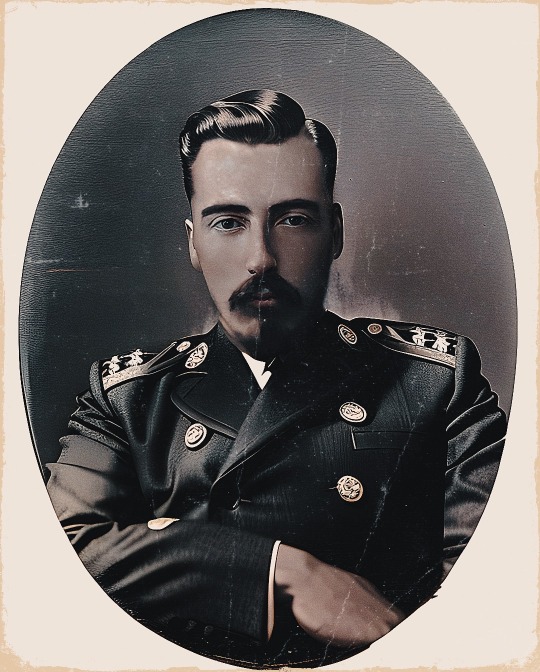



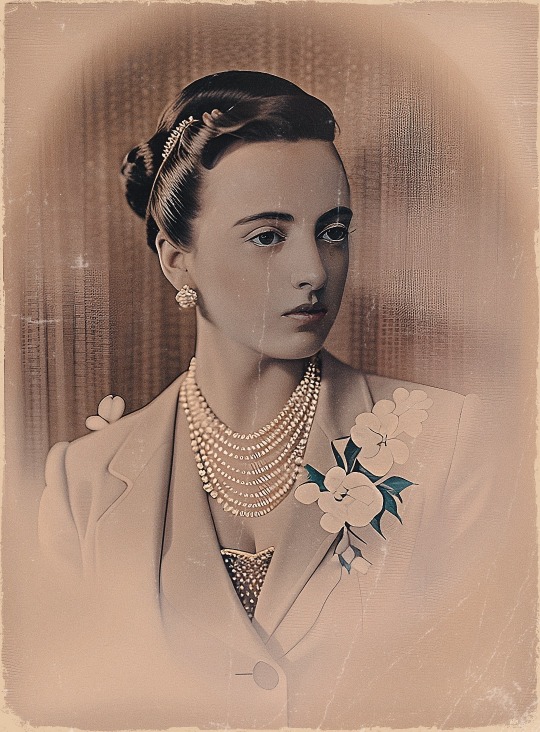
1. Crown Prince Constantine of Greece and his fiancée Princess Sophie of Prussia.
2. Countess Sophie de Torby.
3. Grand Duke Michael Mikhailovich of Russia.
4. Countess Nadejda de Torby.
5. Countess Anastasia de Torby.
6. Queen Maud of Norway.
7. Grand Duchess Anastasia Mikhailovna of Russia.
7 notes
·
View notes
Note
name 3 royals that you think are underrated?
Name 3 royals that you think are overrated?
Im so curious to see your answer😊
Underrated Royals:

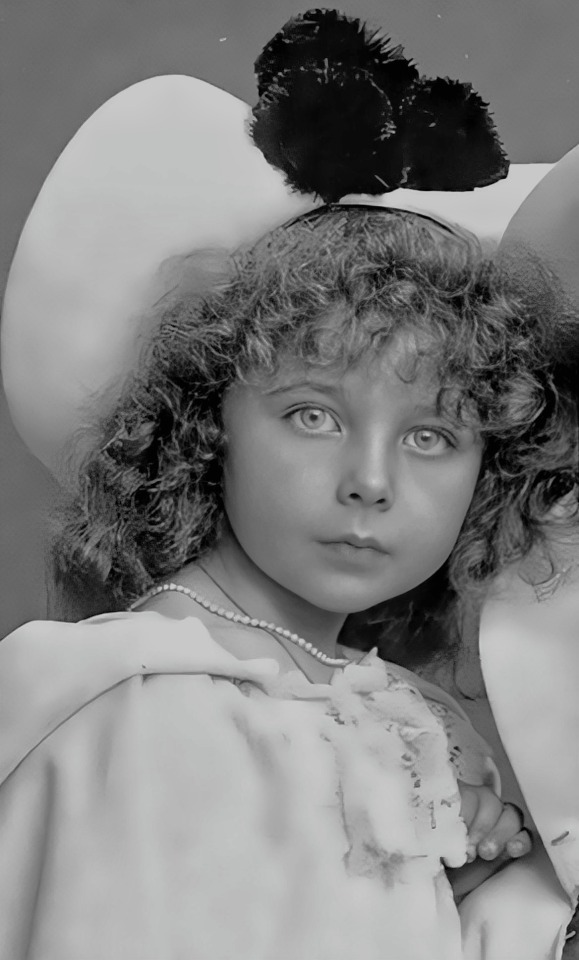
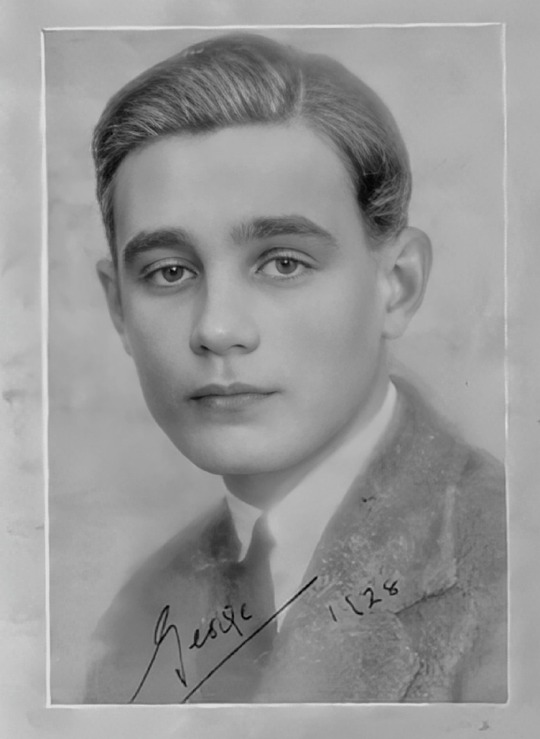
Princess Alice of United Kingdom 🥀
Princess Elizabeth of Hesse and by Rhine (1895-1903)💔
George Mikhailovich count brasov, Son and only Child of Grand Duke Michael Alexandrovich🥲
Overrated Royals:
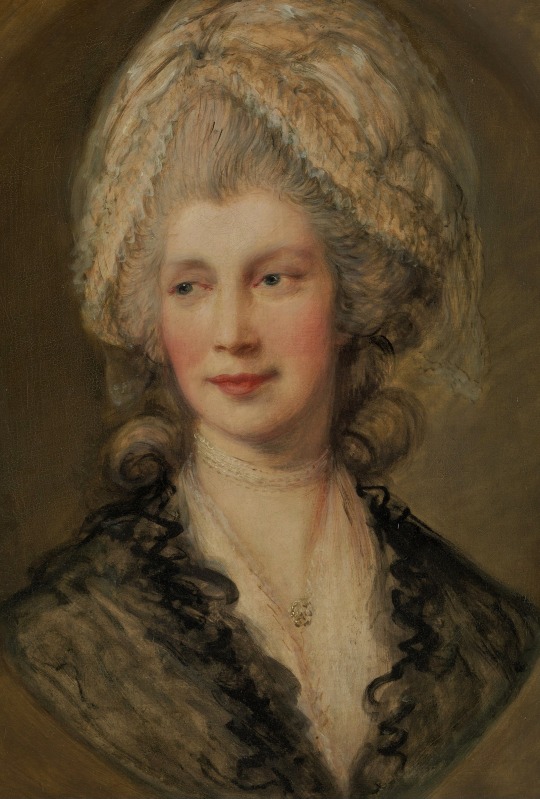

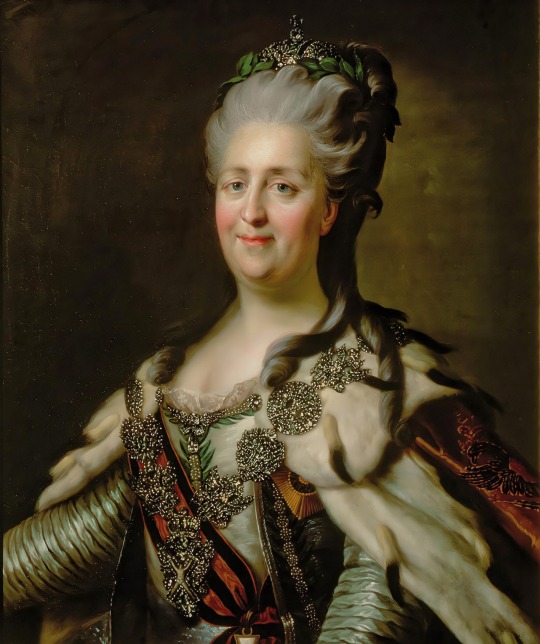
Queen Charlotte
Empress Elizabeth of Austria
Catherine the Great 😒
#princess alice#princess elizabeth of hesse and by Rhine#George Mikhailovich#Queen Charlotte#empress elisabeth of austria#catherine the great
9 notes
·
View notes
Text
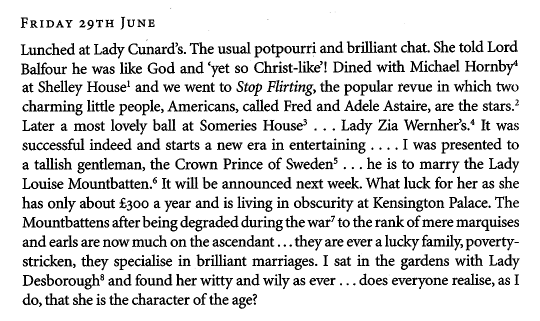
Henry ‘Chips’ Channon: The Diaries (Vol. 1), 1918-38, entry for 29th June 1923
—
Friday 29th June
Lunched at Lady Cunard’s. The usual potpourri and brilliant chat. She told Lord Balfour he was like God and ‘yet so Christ-like’! Dined with Michael Horby¹ at Shelley House² and we went to Stop Flirting, the popular revue in which two charming little people, Americans, called Fred and Adele Astaire, are the stars.³ Later a most lovely ball at Someries House⁴ ... Lady Zia Wernher’s.⁵ It was successful indeed and starts a new era in entertaining .... I was presented to a tallish gentleman, the Crown Prince of Sweden⁶ ... he is to marry the Lady Louise Mountbatten.⁷ It will be announced next week. What luck for her as she has only about £300 a year and is living in obscurity at Kensington Palace. The Mountbattens after being degraded during the war⁸ to the rank of mere marquises and earls are now much on the ascendant ... they are ever a lucky family, poverty-stricken, they specialise in brilliant marriages. I sat in the garden with Lady Desborough⁹ and found her witty and wily as ever ... does everyone realise, as I do, that she is the character of the age?
—
1. Michael Charles St John Hornby (1899-1987), son of St John Hornby, was the founding partner of WH Smith.
2. The Hornby family’s house in Chelsea.
3. Frederick Austerlitz (1899-1987), who took the name Fred Astaire, was an American actor, dancer and singer who achieved worldwide fame in the 1930s in a series of Hollywood musicals renowned for their dance routines; and his sister Adele Marie (1896-1981), with whom he began a vaudeville act as children as 1905, when they changed their name to Astaire. By 1923 they had a Broadway act, which they were touring in London.
4. A Crown State property rented by the Wernhers in Regent’s Park, designed by John Nash and damaged by bombing during the Second World War. It was demolished in 1958.
5. Countess Anastasia Mikhailovna of Torby (1892-1977), elder daughter of the Grand Duke Michael Mikhailovich of Russia, and therefore a great-granddaughter of Tsar Nicholas I. She married, in 1917, Harold Wernher (1893-1973), later 3rd Bt. She was granted the rank and precedence of an earl’s daughter after her marriage and stopped using her Russian title, being known as Lady Zia Wernher thereafter.
6. Oscar Fredrik Wilhelm Olaf Gustaf Adolf (1882-1973), from 1950 King Gustaf VI Adolf of Sweden. He was the widower of Princess Margaret of Connaught (1882-1920), whom he had married in 1905; she was the cousin of King George V, and had died suddenly while eight months pregnant with her sixth child.
7. Louise Alexandra Marie Irene Mountbatten (1889-1965), previously Princess Louise of Battenberg, married the Crown Prince of Sweden (vide supra) in 1923, and was Queen Consort of Sweden from 1950. She was daughter of Prince Louis of Battenberg, who became 1st Marquess of Milford Haven when renouncing the German titles in 1917. She had earlier turned down proposals from King Manuel II of Portugal and had been secretly engaged to Prince Christopher of Greece, who was unable to marry her because he had no money; a second engagement was to Stuart Hill, an artist, whom she met while nursing in the Great War and who turned out to be homosexual.
8. There was a protracted debate between Lloyd George, King George V and Lord Stamfordham, the King’s private secretary, in 1917 about the titles to be bestowed on German members of the King’s family who had pledged allegiance to him and had been prepared to forfeit their German ranks. The King was cautioned against granting too many titles and to avoid bestowing any dukedoms. The Mountbatten marquessate was a compromise and their rise would indeed be unstoppable, with the surname of members of the House of Windsor becoming Mountbatten-Windsor in 1960, thirteen years after the marriage of the future Queen Elizabeth II to Philip Mountbatten.
9. Ethel ‘Ettie’ Fane (1867-1952), married in 1887 William Henry Grenfell (1855-1945), 1st Baron Desborough, a former Liberal MP who had joined the Conservatives in 1893 over his disagreement with the second Home Rule Bill for Ireland. Their three sons (qqv) predeceased them, two killed in the Great War and a third in a car crash.
#chips channon#channon diaries#1923#1920s#emerald cunard#arthur balfour#michael hornby#fred astaire#adele astaire#zia wernher#gustaf vi adolf#louise mountbatten#ettie desborough#🕰️
7 notes
·
View notes
Text



Grand Duke Michael Alexandrovich Romanov(Left), Count George Mikhailovich Brasov(Middle,son of GD Michael), Countess Natalia Sergeyevna Sheremetyevskaya, Countess Brasova(Right)(Wife).
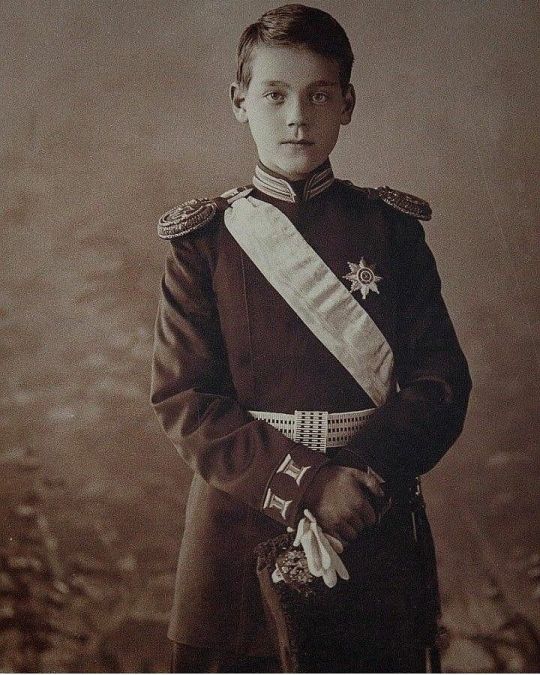

At the beginning of 1908, Michael began a friendship with Natalia Sergeyevna Wulfert, the wife of a fellow officer; she was previously divorced and had a young daughter by her first husband. Their relationship deepened, and by the summer of the following year, they were lovers. By that winter, Natalia was separated from her husband and living in an apartment in Moscow paid for by Michael. When the Tsar became aware of the situation, he had his brother transferred to the Chernigov Hussars at Orel, but Michael traveled from Orel to Moscow several times a month to visit Natalia. She gave birth to their son in July of 1910. (As this occurred - before - her divorce from Wulfert, the eventual divorce decree was back-dated.) The baby George - named after Michael's dead brother - was given the surname "Brasov" derived from the name of Michael's estate Brasovo, in acknowledgement of his paternity. The following year the Tsar permitted Natalia to move to Brasovo, granting her the surname "Brasova".
In September, the couple again went abroad, again followed by the Okhrana. While in Berlin, they announced that they would drive to Cannes. But, eluding the secret police, they made a diversion to Vienna, where they were secretly married in the Serbian Orthodox Church, on October 16th. A few days later, they arrived at Cannes, where they were joined by the two children. Two weeks after the wedding, Michael wrote to his mother and brother to inform them; they were, not surprisingly, horrified and angry. The Tsar was particularly upset as his son was in the midst of his most serious haemophiliac episode, and Michael had explained that it was just that dire situation that had spurred his decision to marry: his actions would remove him from the succession and, should the young Tsarevich die, he couldn't be separated from Natalia and their child. In a series of decrees between December and January 1913, Nicholas relieved Michael of his command, banished him from Russia, froze all his assets there, and seized control of his estates. Michael and Natalia - who would not be styled Grand Duchess, but called Madame or Countess Brasova - lived in French and Swiss hotels for the next six months. They were visited by sympathetic friends and relatives, including his sister Xenia. In July they met the Dowager Empress in London; according to the Grand Duchess Xenia's diary, her mother told Natalia "a few home truths". Not long after, Michael took a one-year lease on Knebworth House, a furnished and staffed estate twenty miles north of London. Michael's finances were nonetheless uncertain since he had to rely on funds released at the Tsar's command, as his brother still controlled all his estates and assets.
3 notes
·
View notes
Text
Alexander Mikhailovich meets “Michael Alexandrovich”
The Associated Press dispatch read:
“Grand Duke Alexander of Russia arrived in Hollywood today for a brief stay. Numerous Slavic inhabitants of this city who have based their chief claim to greatness on the fact that they were Aides in the Ducal suite, Generals in the Imperial Army and otherwise high in the Russian Court shenanigans discovered that they had to stay out of town for the next three days.”
This surprised me. I had no intention whatsoever of checking up on anybody’s claims. I took it for granted that everything grows fast on the rich soil of California, be it oranges or Russian titles. I came because my manager wanted me to and because I had always been a fervent motion picture fan. One star in particular attracted me, John Gilbert, which was only natural, considering that for many years he had been playing the parts of Russian Grand Dukes. I envied him. His gorgeous boyard costumes, his spectacular supper parties, the informality of his manner, the pair of graceful, unmuzzled tigers that followed on his heels, his dominant way with the beautiful ladies-in-waiting – all this awakened bitter memories of the strict regulations which made myself and my cousins wear plain uniforms, limited our choice of household pets to German dachshunds and Persian cats, and forced us to sleep n narrow, iron bunks so different from those luxurious triple beds constructed in Mr. Gilbert’s apartments. “A Grand Duke of St. Petersburg meets a Grand Duke of Culver City” – I thought this would please even my manager who never stopped complaining that I interfered with his “promotion work”. Unfortunately this epochal meeting never took place. By the time I had delivered my lectures in and around Los Angeles and got through with several “highly respected” lawyers who wanted to see me on the part of “someone” whom I “love very much,” I had to catch my train for Denver and points east.
The mysterious “someone” turned out to be none other than Grand Duke Michael Alexandrovich, my late brother-in-law who had been shot by the Bolsheviks twelve years before near the city of Perm. There were four individuals in Los Angeles who claimed to be the “genuine” Grand Duke Michael. Three of them preferred to be represented by their lawyers, but the fourth came to see me in person. A plumpish man of about five-seven (my late brother-in-law stood six-three in his stockinged feet) he spoke with a strong Ukrainian accent and insisted on calling me “Your Holiness”. He made up in courage what he lacked in height and knowledge of titles. His uniform – an exotic mixture of medieval Moscow and modern Culver City – was in itself worth a visit to Los Angeles.
“You remember this uniform, Your Holiness,” he exclaimed on entering my room.
I did. I had seen it last in Elinor Glyn’s His Hour.
“How is my mother?” he inquired next.
“His mother” has been dead two years.
He took this news bravely. Just touched his eyes with an enormous monogrammed handkerchief and said , “God bless her soul.”
“The local papers don’t go in much for international news,” explained his escort, a white-haired, dignified person who looked like an old-fashioned president of a college.
I waited. I was in no hurry to throw them out; the primitiveness of their fakery made it thoroughly unoffensive.
“Some of the best people in this town are my closest friends,” said the gentleman of many medals.
I waited again.
“They believe me implicitly but I thought a signed affidavit of Your Holiness might help me to disarm the enemies of the Romanoffs.”
I said a few words in French to my secretary.
“You are not angry?” asked the escort.
“Not at all,” I said, “I simply asked my secretary to bring his camera.”
“A camera?”
“Yes, a camera. I would like to take a photograph of your friend. I have quite a collection of men posing as Grand Duke Michael Alexandrovich but I never saw anything like him.”
“I used to wear a beard,” said the imposter timidly.
“That was wrong,” I advised. “Never do it again. Just stay as you are.”
“So you won’t sign the affidavit?”
“Sorry, old man.”
“I guess we’d better go,” said the escort.
They left as they had come. Heads up, their courage undiminished, their faces reflecting straightforwardness and honesty. I hope for their sake that they are still being received by the “best people” in Los Angeles. In a world overridden by a passion for details they seemed to be the last Mohicans of the Theatre that was Theatre.
‘Always a Grand Duke’ by ‘Alexander, Grand Duke of Russia’, chapter 13.
5 notes
·
View notes
Photo
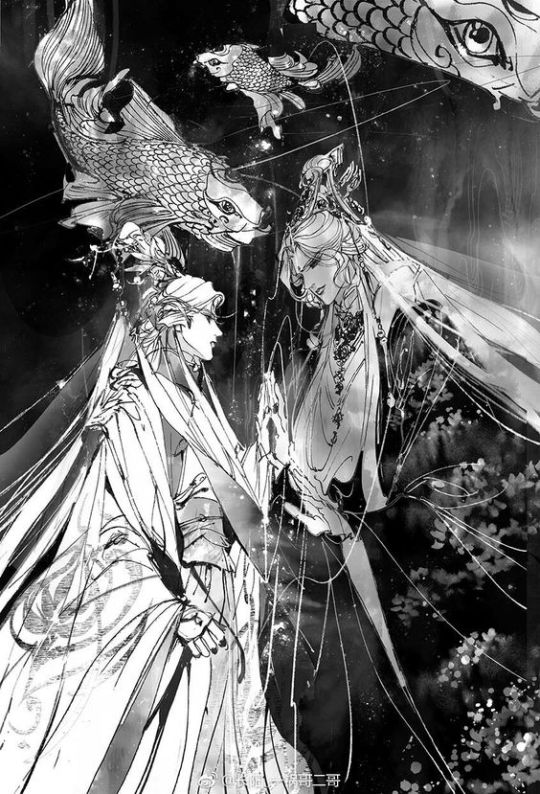
Maurice Paléologue once did some idle arithmetic and calculated that, by blood, Tsar Nicholas II was only 1/128th Russian, while his son, the Tsarevich Alexis, was only 1/256th Russian. The habit Russian tsars had of marrying German and Danish wives was responsible for these startling fractions; they suggest better than anything else the extent to which the original Romanov blood had been diluted by the beginning of the twentieth century.
As head of the family, Nicholas II presided over an immense clan of Romanov cousins, uncles, aunts, nieces and nephews. Although keenly jealous of name and rank, they were often casual about duties and obligations. By education, language and taste, they were part of the cosmopolitan aristocracy of Europe. They spoke French better than they spoke Russian, they traveled in private railway coaches from hotels at Biarritz to villas on the Riviera, they were more often seen as guests in English country houses or palaces in Rome than on their family estates beside the Volga or the Dnieper or the Don. Wealthy, sophisticated, charming and bored, most of the Romanovs considered “Nicky,” with his naïve fatalism, and “Alicky,” with her passionate religious fervor, to be pathetically quaint and obsolete.
Unfortunately, in the public mind, all the Romanovs were lumped together. If Nicholas’s inadequacies as tsar weakened the logic of autocracy, the family’s indifference to its reputation helped to corrode the prestige of the dynasty. Nicholas’s sister Grand Duchess Olga Alexandrovna recognized the family’s failure. Shortly before her death in 1960 she observed sorrowfully:
“It is certainly the last generation that helped to bring about the disintegration of the Empire.… All those critical years, the Romanovs, who should have been the staunchest supporters of the throne, did not live up to their standards or to the traditions of the family.… Too many of us Romanovs had … gone to live in a world of self-interest where little mattered except the unending gratification of personal desire and ambition. Nothing proved it better than the appalling marital mess in which the last generation of my family involved themselves. That chain of domestic scandals could not but shock the nation … but did any of them care for the impression they created? Never.”
The problem was divorce. By law, members of the Imperial family were forbidden to marry without the sovereign’s consent. They were also forbidden to marry commoners or persons who had been divorced. The Orthodox Church permits divorce in cases where adultery has been committed; indeed, in the eyes of the Church, the act of adultery itself dissolves a Christian marriage. But what is permitted is certainly not encouraged. In the Imperial family, whose private life was supposed to set an example, divorce was considered a stain and a disgrace.
Yet, scarcely was Nicholas II on the throne before the strict code began to crumble. First, his cousin Grand Duke Michael Mikhailovich casually married a commoner and went to live in England. Next, the Montenegrin princess Grand Duchess Anastasia divorced her husband, the Duke of Leuchtenberg, to marry Grand Duke Nicholas, the tall soldier who commanded the Russian armies in World War I. Soon afterward, the Tsar’s youngest uncle, Grand Duke Paul, having been left a widower, married a commoner and a divorcée.
“I had a rather stern talk with Uncle Paul which ended by my warning him of all the consequences his proposed marriage would have for him,” Nicholas wrote to Marie on this occasion. “It had no effect.… How painful and distressing it all is and how ashamed one feels for the family before the world. What guarantee is there now that Cyril won’t start at the same sort of thing tomorrow, and Boris and Serge the day after? And in the end, I fear, a whole colony of members of the Russian Imperial family will be established in Paris with their semi-legitimate and illegitimate wives. God alone knows what times we are living in when undisguised selfishness stifles all feelings of conscience, duty, or even ordinary decency.”
- Nicholas and Alexandra, Robert K. Massie.
0 notes
Text
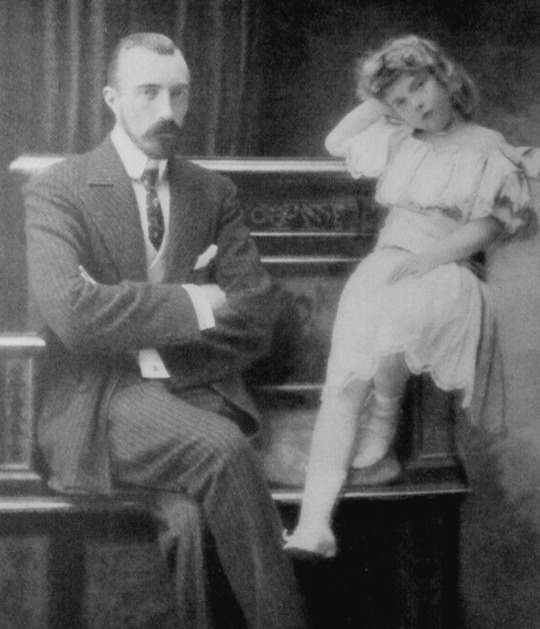
Grand Duke Michael Mikhailovich and his eldest child, Countess Anastasia Mikhailovna de Torby, late 1890s.
#grand duke michael mikhailovich#countess anastasia mikhailovna de torby#romanov family#house of romanov#romanov#1890s#late 1890s
81 notes
·
View notes
Text



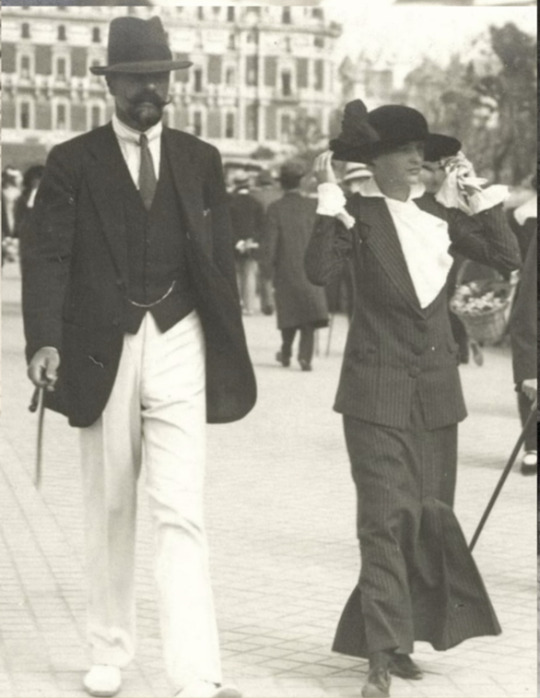
Grand Duchess Xenia Alexandrovna, Grand Duke Alexander (Sandro) Mikhailovich, and Princess Irina Alexandrovna in Biarritz with their entourage.
All of them look very elegant. I just love Irina's outfit; it favors her. Sandro looks like a fashion plate. Given the weather in the area of Biarritz and their outfits, it must have been early spring or autumn.
Or maybe they were in the French Riviera. Sandro's older brother, Grand Duke Michael Mikhailovich (Miche-Miche) financed in 1908 the construction of the Hôtel Carlton, in Cannes. The sky is always blue there, and the climate changes milder. (gcl)
#russian history#imperial russia#Grand Duke Alexander Mikhailovich#Grand Duchess Xenia Alexandrovna#Princess Irene Alexandrovna
10 notes
·
View notes
Text

Maria Feodorovna with her children: Grand Duchesses Xenia and Olga, Tsar Nicholas II, Grand Duke Michael and her sons-in-law, Peter of Oldenburg and Grand Duke Alexander.
(source: 📷)
#tsar nicholas ii#xenia alexandrovna#olga alexandrovna#peter of oldenburg#grand duke michael#grand duke alexander mikhailovich#maria feodorovna#xenia and sandro#olga and peter#my own#grand duchess#tsar#grand duke#tsarina
15 notes
·
View notes